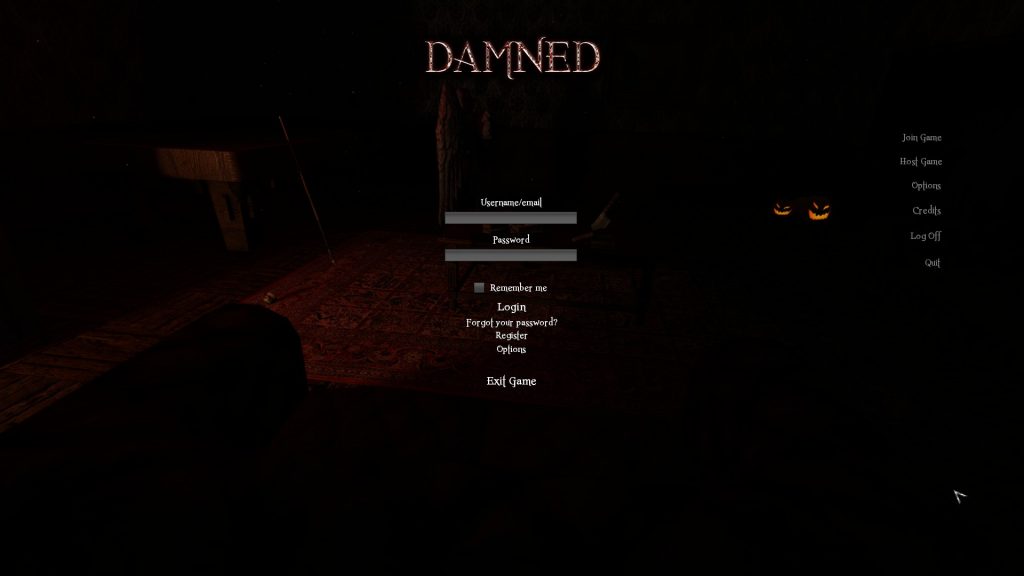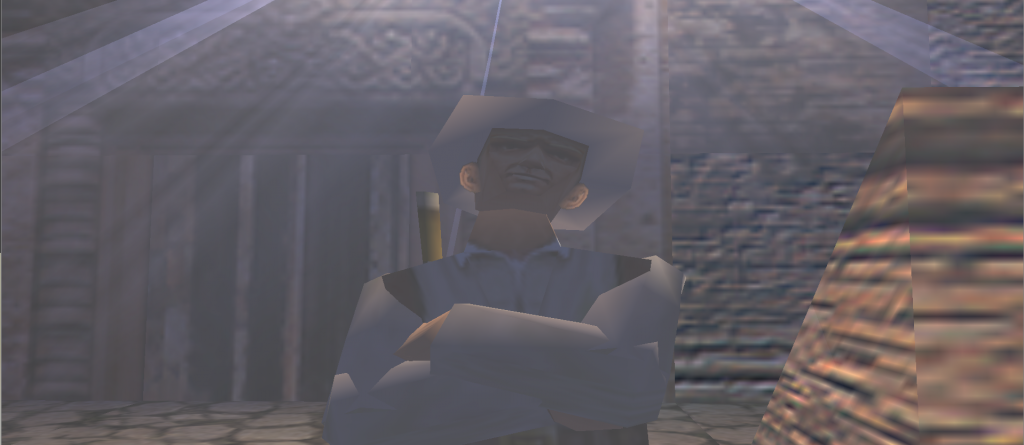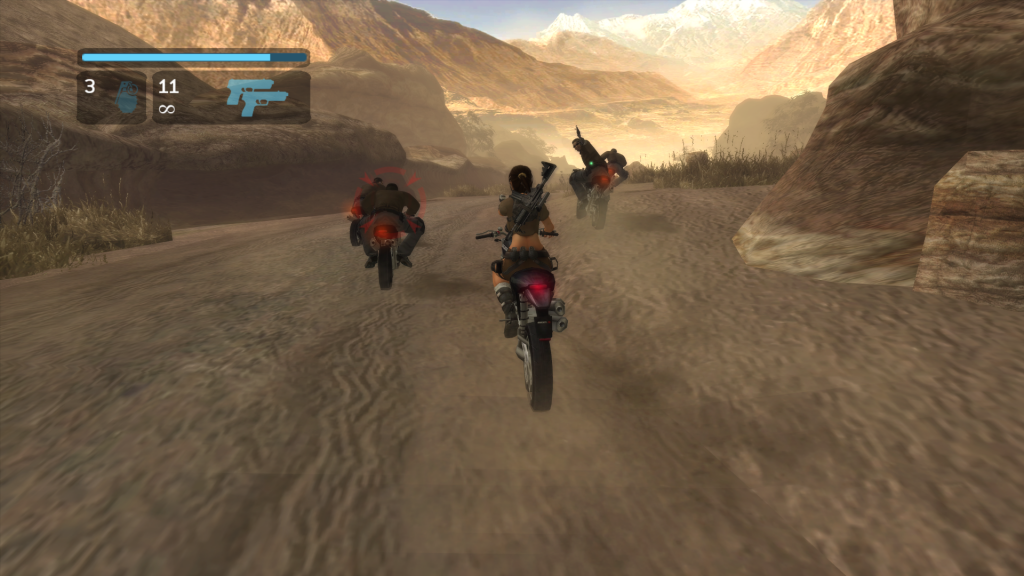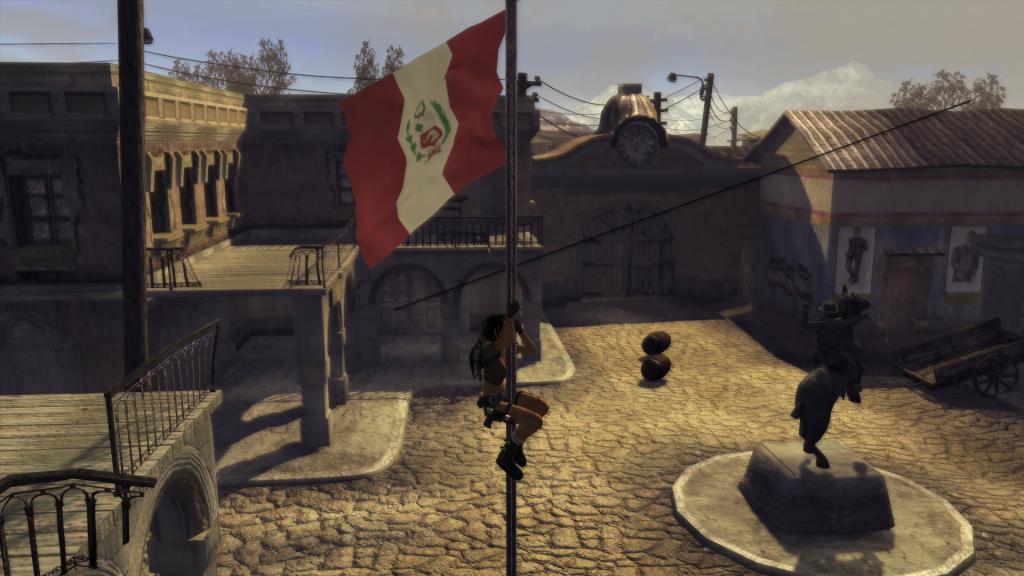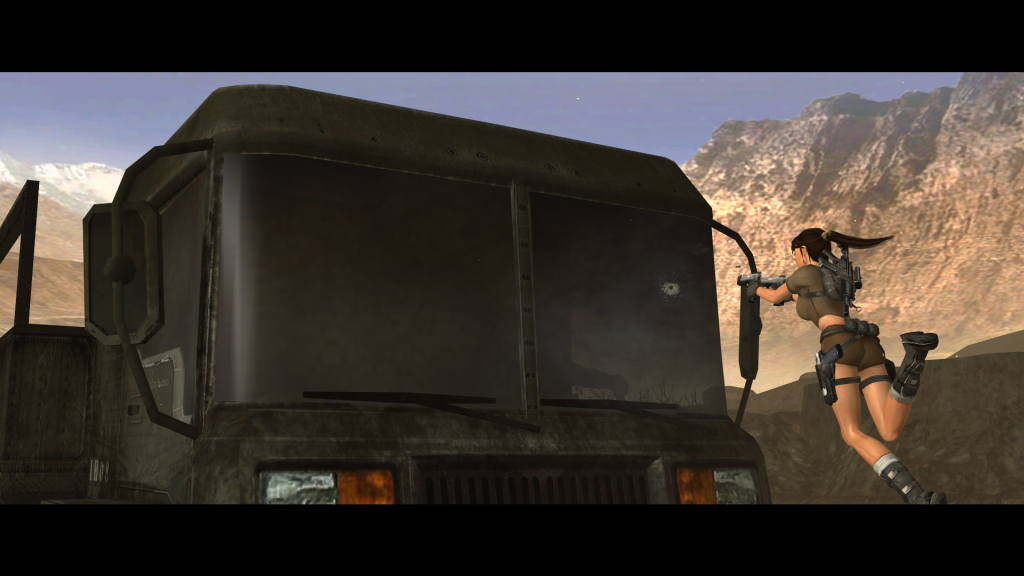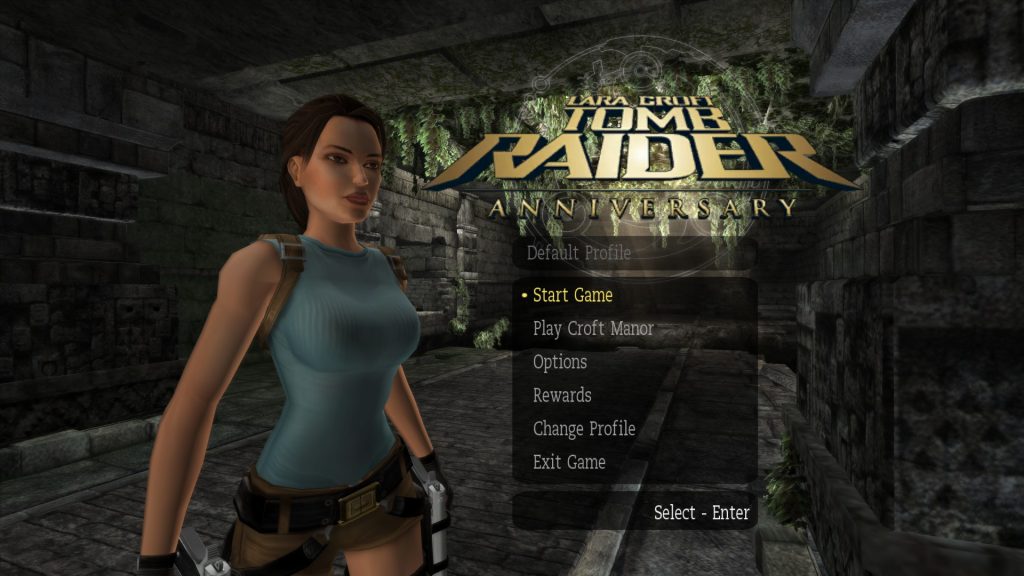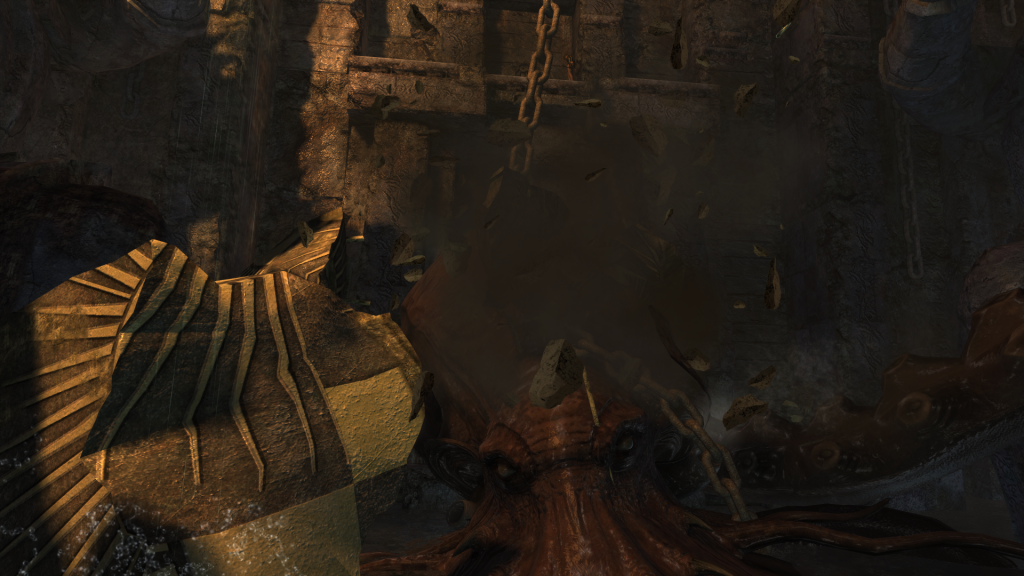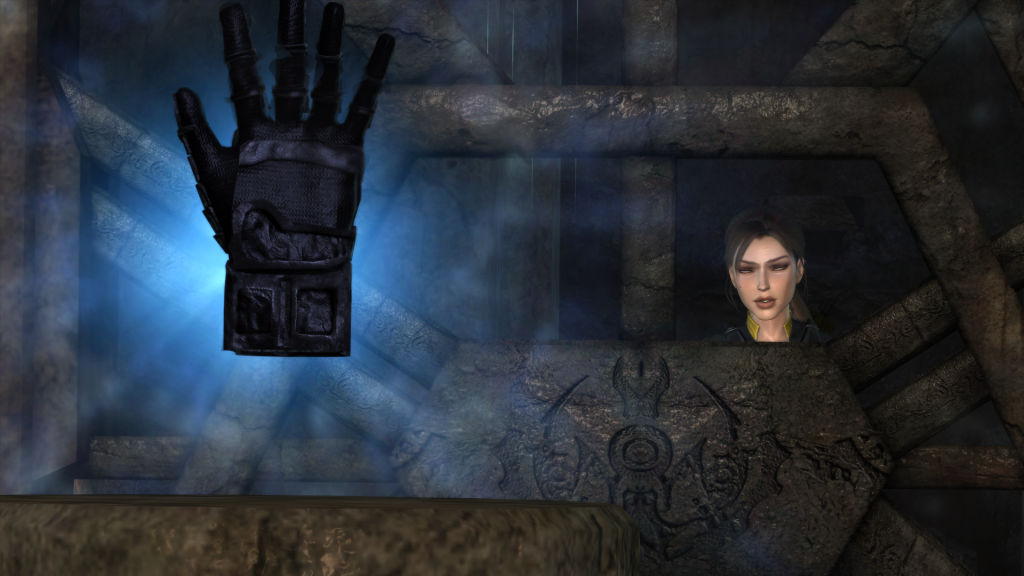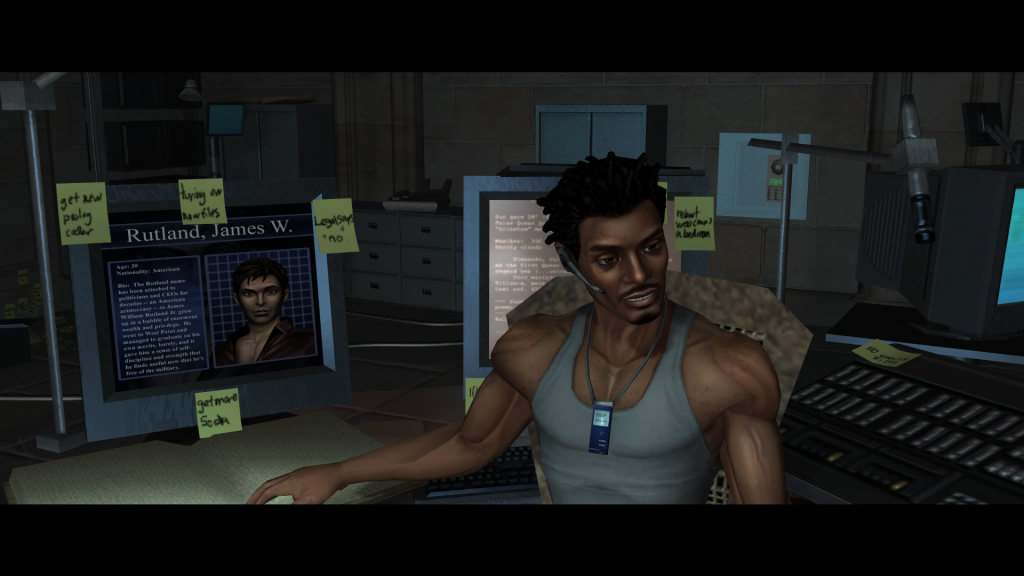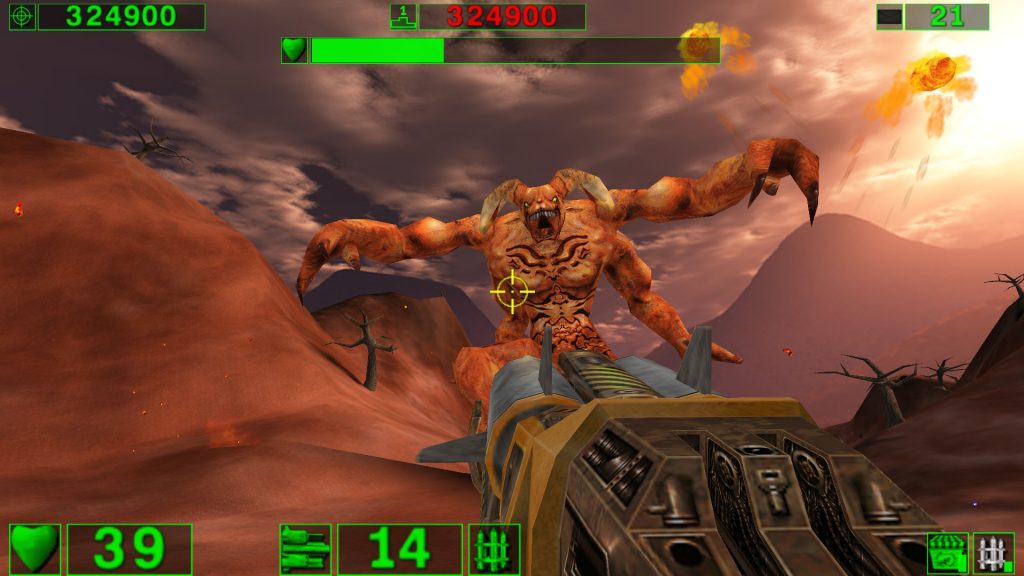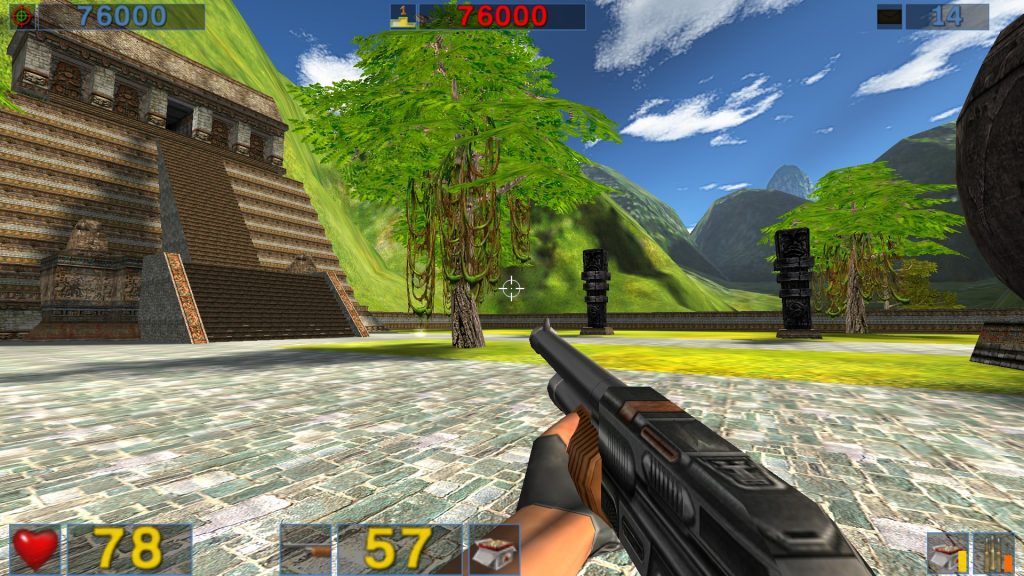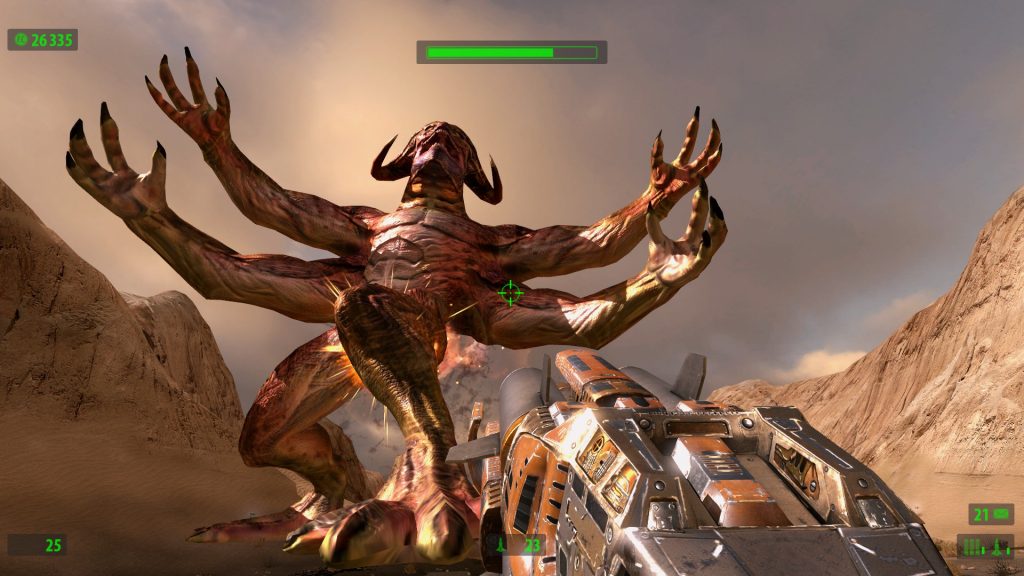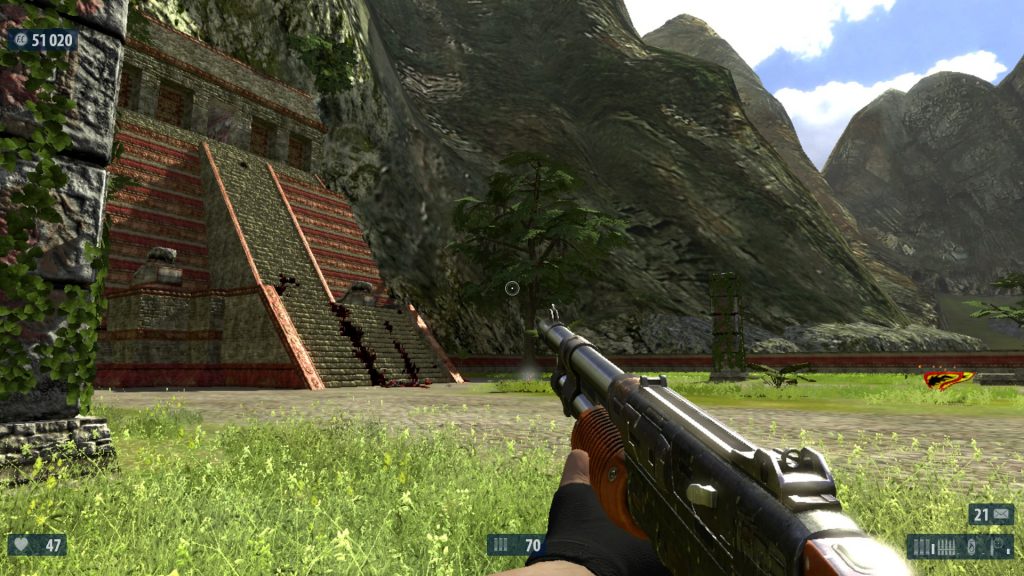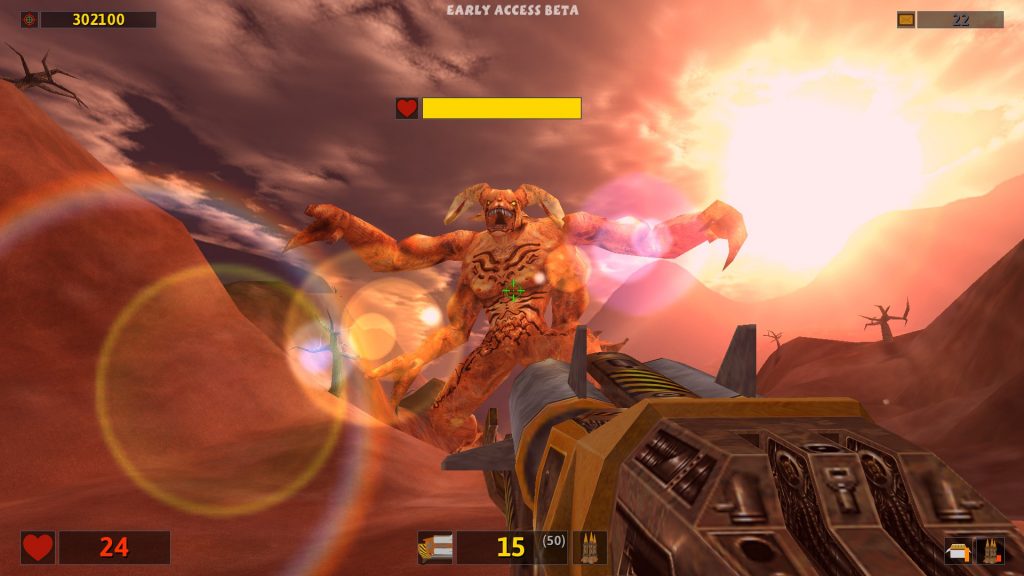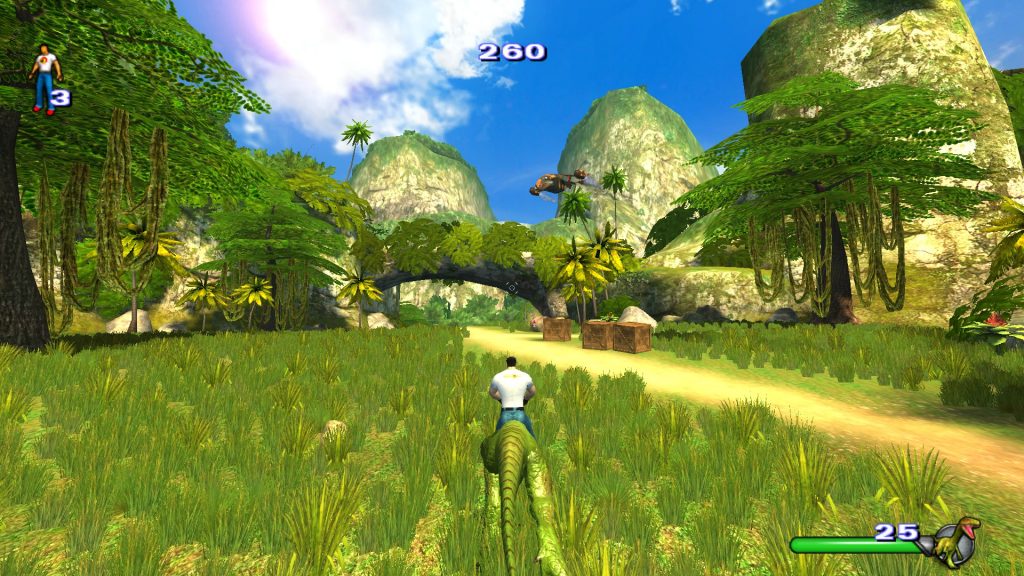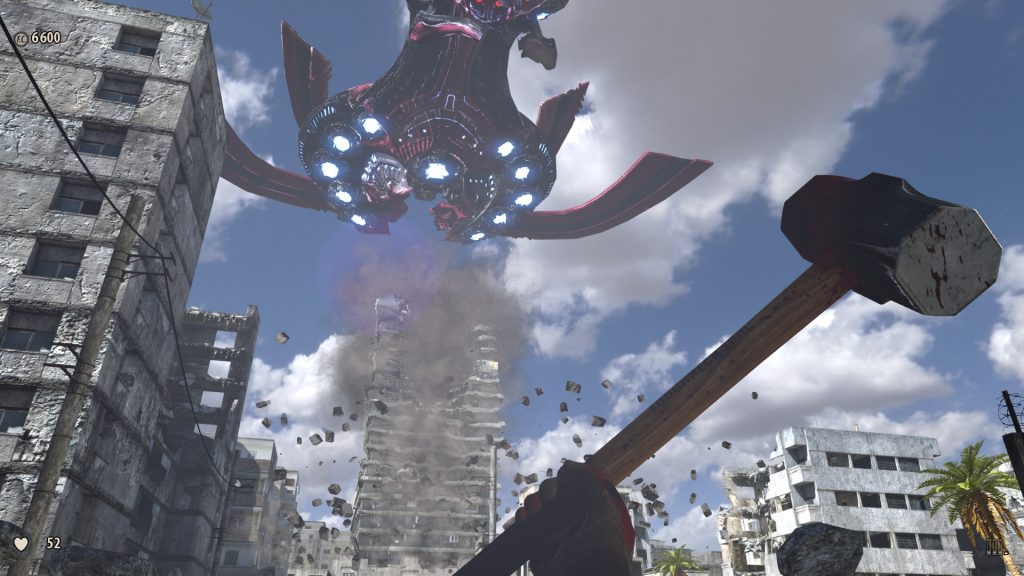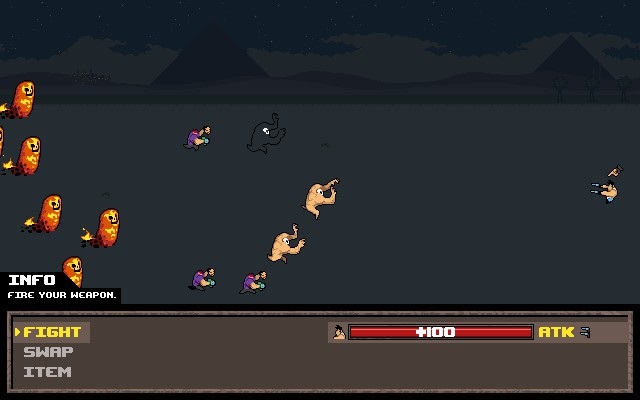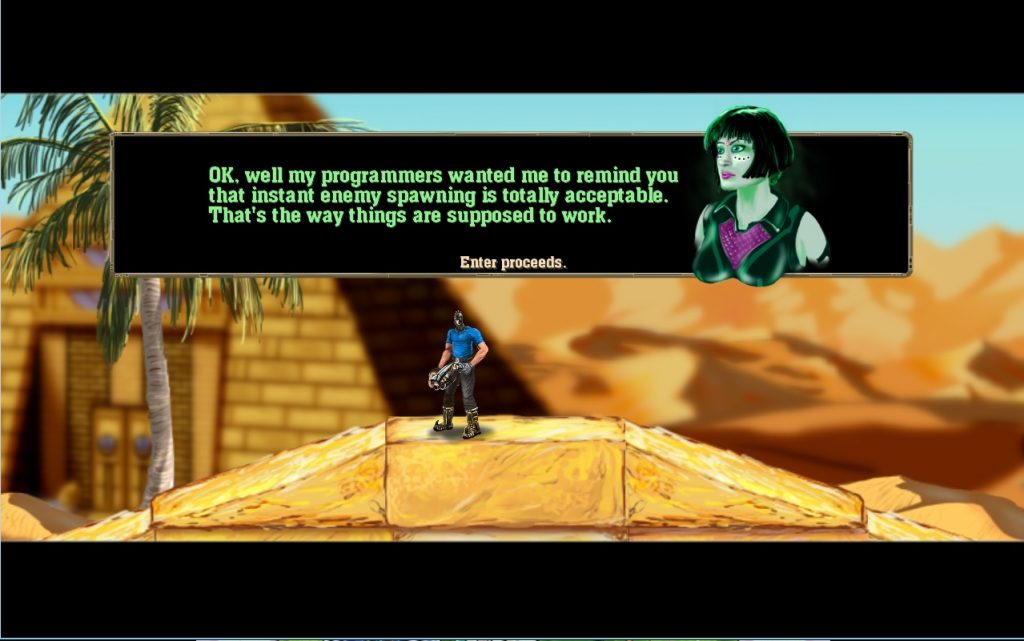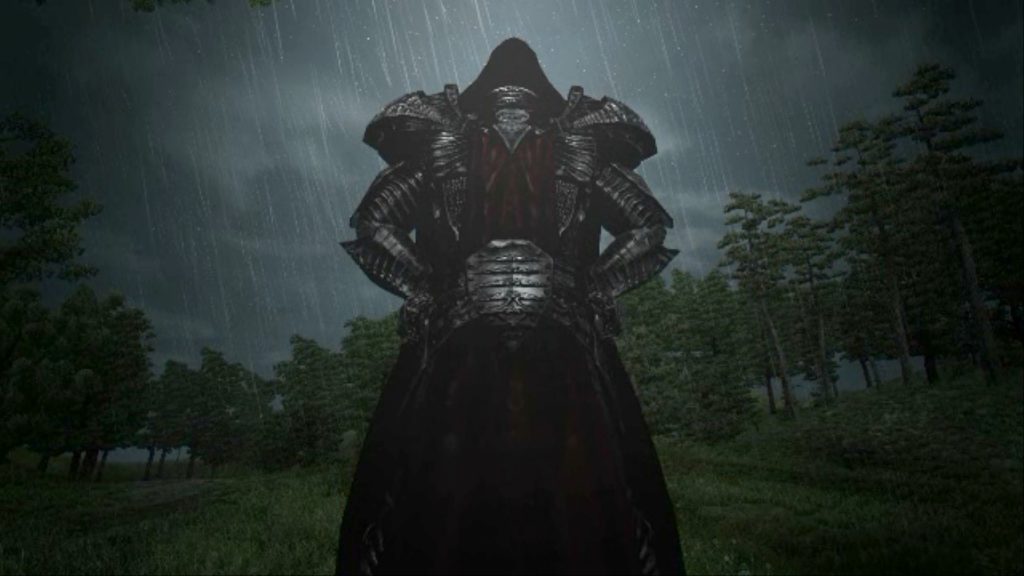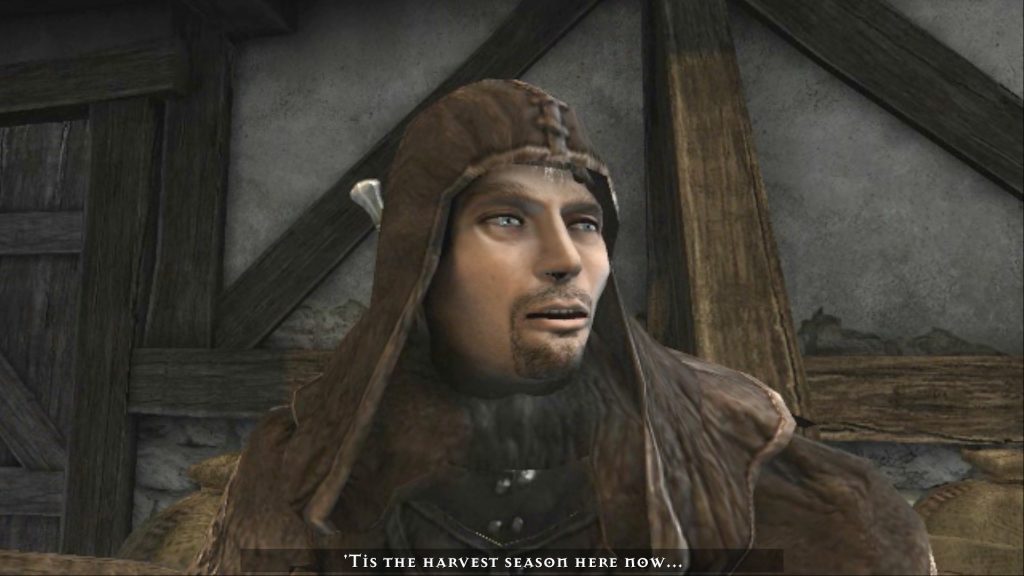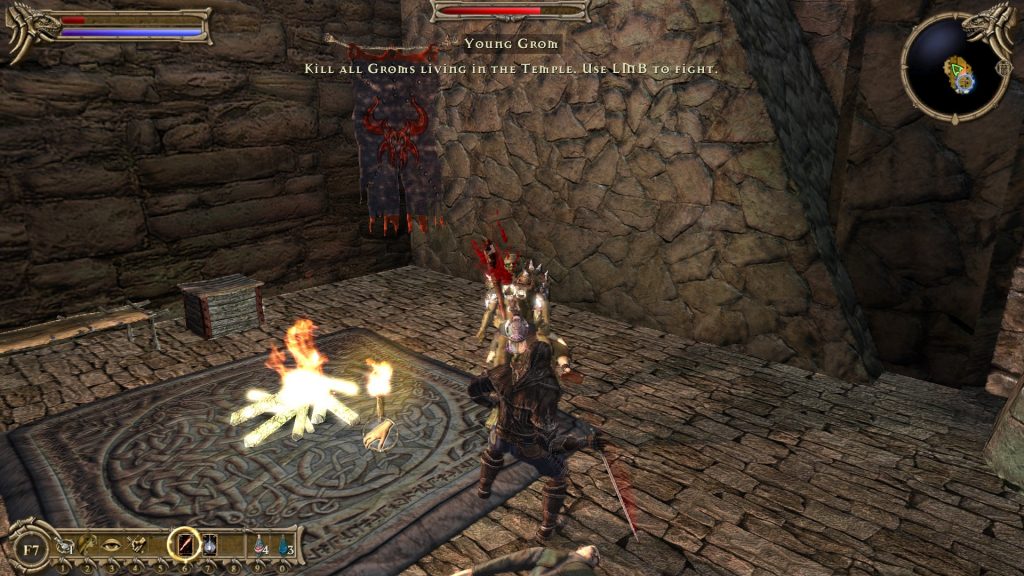“Damned?” Yeah, that sums it up. I’m done here.
Category: Tier Four
Tomb Raider
I suppose it was inevitable that I’d be rolling a lot of big series in my Steam lottery. I have many, many games that are part of a series that I haven’t played. Mostly, I held off because I like to start at the beginning of a series, and the first game is usually not that great (I’m looking at you, Final Fantasy. And Ultima.). This time, it’s Tomb Raider and the various adventures of Lara Croft. I have now tried all the PC-released Tomb Raiders (except Rise of the Tomb Raider. Don’t have that one – though I’ve heard good things). There’s a lot to say here, but I’ll try to keep things moving quickly.
The Tomb Raider franchise is one of the most well-known of video game franchises, and Lara Croft is perhaps the most famous female video game character thus far in gaming history (competing with Princess Peach, Samus Aran, and Cortana). The PC releases of the franchise can be broken into three categories: the originals – built on the classic engine, the Legend chronology – built on the Legend engine, and the modern era – a hard reboot from 2013.
Tomb Raider, Tomb Raider II, Tomb Raider III, Last Revelation, Chronicles, Angel of Darkness
Why, you might ask, are all six of these games grouped together? It’s because I’m cheating a bit. I’m lumping all of these into the “Technical Issues” category – though not because the games didn’t run on my computer. They’re being shuffled to the side because I just could not get the hang of the controls. Between not having mouselook and Lara turning and jumping crazily, my ability to play these games is almost non-existent. Back when they were released, I’m sure I would have put the time into learning the controls – but today? I’m content to just look for a fan mod that makes it easier to play. I do want to comment on my (limited) experience, but that will wait until my discussion of Lara herself.
Tomb Raider Legend and Tomb Raider Anniversary
These two games marked the first soft reboot of the series and a long-overdue move to a far superior game engine. Both of these games go solidly into Tier One – Legend is the only game I played longer than I force myself to – and Anniversary seemed on par. The platforming isn’t as terrible as in previous games (or future ones, for that matter), Lara is still a strong protagonist, and her legs are composed of more than three polygons. The set pieces are fun (even though I did get a bit lost). Near the beginning there’s an arena that I got stuck in for about ten minutes while I tried to find my way out. That brings me to the two problems I had with this section of games: puzzles aren’t always clearly presented, and climbing is a bit tricky (and not in a good way).
My complaints wouldn’t be such a problem except that puzzles and climbing are the bread and butter of the Tomb Raider franchise. While it kept being fun, I found myself wishing that these games had the puzzle-presentation of Valve with the free-running of Assassin’s Creed. There’s a bit of advice (I don’t remember where I first heard it) about puzzles: it stated that a good video game puzzle is one that you have all the pieces to. In Tomb Raider Legend, there’s far too many instances where a puzzle relies on a small hidden door or switch – this is acceptable from time to time, but it breaks the flow of the game when it goes on too long. Similarly, climbing is limited to very specific (and often unclearly marked) ledges – which makes the navigation part of the game that much more obtuse.
Nevertheless, these games were fun and kept me interested and playing. In fact, Anniversary (a re-imagining of the first game with the engine of Legend) had that ineffable “good” feeling you get when playing a game that is just plain fun.
Tomb Raider Underworld
Those of you who have played the Tomb Raider franchise may have noticed I left off one of the Legend engine games: Underworld. This is because it goes into Tier Three, unlike its predecessors. It goes into Tier Three for two reasons. First, the camera and movement. While Legend and Anniversary’s camera control was reasonable, Underworld’s camera and Lara’s direction of movement will only occasionally follow your command.
The second problem comes from the ridiculous and contrived plot – which is a remarkable complaint when talking about a Tomb Raider game. But as you see above, one of your first tasks is to murder a giant octopus. Typically, it is best to descend slowly into strange worlds: slowly revealing more and more unnatural things. Underworld pays little mind to this – or to reason itself – preferring to have a plot that progresses because there wouldn’t be a story otherwise. Why do you kill the octopus? No particular reason. Why do you call your team before diving to the underground city? No reason. How do the “bad guys” show up immediately behind you with no warning and entirely silently? Because there wouldn’t be as much plot otherwise. This seems to be a theme throughout the game – trying to “raise the stakes” just results in an unbelievable story.
Tomb Raider
Finally, we come to the most recent reboot. I don’t have any pictures for this section since I actually beat this game a year or two ago. Since it is part of the same series, I thought I should talk about it briefly here. This also gives me the chance to put a second game into Tier Four. I recently talked with Chezni about Tier Four, and it turns out we had different ideas about what it meant. The definition on the rules states that Tier Four games are not worth the time put into them. I had taken that to mean the time spent to play them was entirely wasted, while Chezni saw the definition as saying that the game itself was not worth the time spent developing it. I like that definition more, and it is the definition I use here.
So why does the Tomb Raider reboot go into Tier Four – particularly given the large number of accolades it received? It’s not because it uses the most cliche of plots (with Nazis and supposedly sympathetic nerds sacrificing themselves for no good reason). Instead, it starts with quick-time events. Quick-time events pervade Tomb Raider and its cutscenes – these replace gameplay with a punishment for not knowing exactly which buttons to push. This is apparent challenge without real challenge, and they only exist to give the player a feeling of accomplishment for doing something cool during what might as well be a cutscene. And if you fail? You run into the next problem: the unreasonably gruesome deaths of Lara Croft.
Lara Croft will die in the most horrific and terrible ways – for no good reason (quite often that you hit the wrong button during a QTE). While playing the game I could only guess that the game designers really, really liked blood and watching people die. Recently, I was talking with Chezni and he mentioned that the producer wanted it this way to inspire the player to want to protect Lara – which certainly explains some things (more on that later). I have no problem with gore or violence. I have a problem with pointless gore and violence. Think about the time the developers spent on animating Lara getting eaten by dogs, impaled by spikes, and nearly/probably raped. Think about the time they could have spend making more places to explore. Get mad.
Finally, we have the biggest problem – at least gameplay-wise. There are mini-temples and crafting mechanics throughout the game, but no motivation to actually use them. I finished the game without finishing a single side-dungeon – and only actually finding one. The game is designed to trick you into thinking you have a whole island to explore. But really, you just follow a set of linear quests to the end of the game. Admittedly, I did not take their chances to explore the island – for the reason that at every point in the main quest-line, you are given a sense of urgency to complete the next mission. I took this to mean that perhaps Lara would return to the island after finishing the plot and give you time to go find all the nooks and crannies where treasure might be hidden. It did not. The Lara in this game would likely never return to this island even if it contained the most fabulous treasures in the world.
Lara Croft
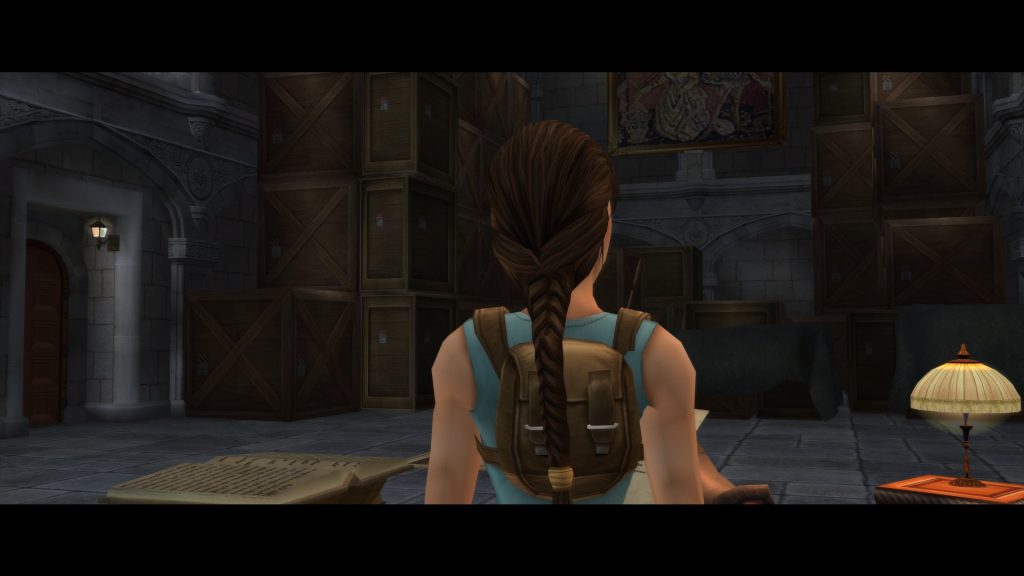
Lara Croft is a difficult character to analyze, made more difficult by the four distinct takes on her character. The Lara Croft of the first six games, the Lara Croft of the Legend trilogy, the Lara Croft of the reboot, and the Lara Croft of the movies are all distinct. Perhaps the best way to describe her influence is controversial (I promise I wrote that before reading her Wikipedia article). On the one hand, all but her most recent portrayal has been as a devil-may-care action hero. On the other hand, perhaps her most famous physical feature is her remarkable pair of…eyes. And if you played video games in the ’90s and early 2000s, it was almost impossible to avoid the seemingly endless supply of nude mods for the Tomb Raider games. Though, on this last point, I’m not sure we should judge a character based on what is done to them by the internet – Rule 34 exists for a reason.
We are faced with two aspects of Lara Croft that diminished as the series progressed: body proportions and sassiness. Earlier iterations of Lara were entirely unrealistic, but she also commanded an attitude of control and confidence – approaching a level rivaling Saints Row. The Legend games toned down both her unrealistic proportions and her remarkable attitude. I think this was probably the sweet spot for Lara as a character – even if it was still on the side of unrealistically proportioned. An action hero can be unrealistic both in character and in body, as long as neither are taken too seriously. At the same time, this must be balanced by believability if you want to start telling a complex story. This toning down continued on both fronts into the reboot – and Lara became yet another bland protagonist for people to project their fancies on.
The Lara of earlier games is an action hero in the style of Bruce Willis in The Fifth Element or RED – ridiculous, over-the-top, and a bunch of fun (if a bit questionable on occasion). This is important because these elements are so diminished in Underworld and non-existent in the reboot universe. In attempting to make Lara more realistic, they made Lara less Lara.
Oh well. At least the developers of Tomb Raider don’t care about body proportions regardless of gender:
Serious Sam Franchise
Lepcis’s First Impression of SSHD:FE
Lepcis’s First Impression of the SS Franchise
As I sat down and took a serious look at the Serious Sam franchise, I couldn’t help but continually think, “What a wreck.” Having read Lepcis’s reviews, I knew what was coming and I wasn’t looking forward to it. You can read the reviews for yourself by using the links above if you like, but one line he wrote sums the whole thing up. “Croteam made 1.5 good Serious Sam games […] and have just been repeating the same game ever since.” I can’t find a better way to describe this mess. There are 9 Serious Sam games loaded in my Steam folder. 2 of them are disjointed outsourced spin-offs. 1 is a terrible sequel. 1 is the original game and 5 are remakes of the original game. Let that sink in. There are 5 remakes of the same game. As much as I dislike the franchise, at least each Call of Duty game has a new Single-Player story (the caveat being that I’ve never really played a COD game). But Serious Sam? Naw, why try? Why use creativity? Just re-hash the same damn thing that achieved pseudo-popularity years ago. I’m not even kidding. Take these 6 games and put them in a pile: 1 is the original game, one is an expansion of the original game, one is an HD remake of the original game, one is an HD remake of the expansion of the original game, 1 is an unfinished fan-made remake of the original game and the last is a prequel of the original game that reuses many of the same jokes and monsters. What. The. Hell.
In spite of my strong feelings of anger, insult and disgust associated with a company that feels so confident that the stupidity of their intended audience is so intense that the won’t even notice that they’re just buying the same game 6 times, I can’t really say anything that Lepcis hasn’t said already. So I’ll try not to. What follows instead is a brief comparison of one game to another built up from the original seed of the first Serious Sam game–short and sweet. You’ll still be able to find the Tier that I believe the game belongs to but I will forego the usual lengthy explanation. Without further ado, let’s get into the excrement deluge that is the Serious Sam series.
Serious Sam Classic: The First Encounter: Tier 3
Floaty. Poor level design exasperated by bland enemy AI and non-existent enemy placement due to “teleport-spawning” enemies. Strategy against every enemy is exactly the same–kite and shoot. Instead of quality you get quantity–hoards of enemies, but none of them create a need for intelligent play since they die as fast as they teleport in. Might as well be a point-and-click adventure. Enemy visual design is creative and unique and the game is very fast paced with relative smoothness. Sam has a few interesting one-liners that are cringy, but that’s the point. Large levels, but no motivation to explore them and little meaningful player interaction with them while fighting enemies due to simplistic designs and teleport-spawning. No need to even fight enemies either, just run through the levels until the developers force you to fight a hoard through use of a locked door or raised wall because their game isn’t well-developed enough otherwise to create meaningful confrontation between the player and enemies otherwise. For its time, mediocre. Nowadays, it’s forgettable. The original Timesplitters, a game with smaller worlds and fewer enemies, was more fun to play, and it came out a year before this.
Serious Sam Classic: The Second Encounter: Tier 2
A huge improvement over the original. Yes, it uses the same engine, assets, monsters etc. The biggest difference is that the level design in this blows the first’s out of the water. There are far fewer enemies that just teleport-spawn out of nowhere. Level designs create meaningful play without boxing the player in all the time and forcing them to fight arena style. When you are boxed in, it feels acceptable and isn’t overdone. Level pacing feels much better as well, not to mention more interesting looking. It just goes to show you, it’s not how pretty your graphics are, or how many enemies you’ve designed–it’s how you use them.
Serious Sam HD: The First Encounter: Tier 2
A direct remake but many improvements over the original. Floatiness is nearly gone. Weapon animations are more believable (there actually is animation for the pistol now). AI is still bland and arena fighting problem still exists. Teleport-spawning still exists, and level design is still relatively poor. Teleport-spawning has been altered so that enemies no longer fall into cliffs from the sky and clip to solid ground. Gone is the headless bomber riding the bull monster (or at least I didn’t see him). You can still just run through the level fighting a minimal amount of enemies. Barely nets T2, but overall just feels better.
Serious Sam HD: The Second Encounter: Tier 2
Once again, a strong improvement over the First Encounter. Contains much more content. Seems to contain several campaigns (including the levels from FE) as well as a survival mode. Makes me wonder why they didn’t just release FE and SE as one game. Biggest complaint is that they’re just recycling the old Sam voice clips, which I didn’t think were that great to begin with. He barely passes as being some sort of troll or ogre–definitely doesn’t pass off as being human. Otherwise, this is the strongest one yet. Definitely would suggest just playing this one and skipping the previous 3. They are, after all, just the same game repeated.
Serious Sam Classic: Revolution: Tier 3
Sorry, I know I said I wouldn’t repeat what Lepcis said, but I have to for this. Why does this exist? Just, why? Literally another remake of FE and SE, only with the original textures and physics. Does Croteam think it’s really worth it sell this fan project? The only advantage to this existing at all is that the old mods that worked with the SS Classics games will work with this since it it’s got the same framework. Otherwise, this is just waste of space. It runs smoother than the Classics versions and that’s about it. It’s not even finished. Don’t even waste your time.
Serious Sam 2: Tier 3
Identity of the game is completely confused. You’d think that a game where you ride dinosaurs, shoot giant monsters and have a sexy blue-skinned assistant would be awesome but… it’s not. Not really. The pacing of the game is severely dropped from previous installments. Enemies are completely new and feel very different from before; the staple headless monster is replaced by a sort of space-ogre. I’ll give them one thing, and that’s that they tried something new. I don’t know if it was a step in the wrong direction, but I do know it just isn’t implemented well. It feels like a strange mix between Halo and Banjo Kazooie, but not in a good way.
Serious Sam 3: BFE: Tier 2
Once you get past the familiar enemies and repeated jokes from the previous installments, this one’s not that bad. I think I’d still rather play SS HD SE, but mechanically speaking this is the stronger title. Finally, there’s a new VA for Sam in a game that also contains the headless monsters. Not a fan of the instant-kill melee attack that Sam always possesses, but DOOM needs to take a leaf out of BFE’s book–you’re not invulnerable while you do it and health doesn’t spurt out of an enemy when you kill them with it, meaning that there’s a bit more strategy to it (but only a bit). I approve of infinite handgun bullets–it allows the devs to create levels that aren’t cluttered with ammo constantly, and it makes the bullets you get for the other weapons a bit more meaningful, since you’re expected early on to use the handgun quite a bit. Sam talks a bit more but isn’t quite as cringy–the VA still sounds like an ogre but it’s a little cleaner so it’s easier on the ears. Level design is pretty solid with plenty of secrets. Enemies have been re-balanced in meaningful ways. For example, the headless bombers now flinch when you shoot them, and explode on the second shot, meaning that you can point blank shoot one that is right next to you and still have time to back away before the final exploding shot. I no longer feel like the devs are just throwing swarms of enemies at you pointlessly–enemies are well-placed, don’t teleport-spawn in and make the levels fun.
Serious Sam: The Random Encounter: Tier 3 (Completed)
I beat this one a while back and… it just is not worth it. It’s buggy as hell but that’s not even the worst of it. It passes off as a flash game, but I’ve played flash games that are better. The first time you play, it might take you 2 hours to beat. If you knew what you were doing, it would probably take less than an hour. Guns and enemies are not really balanced, and the niches that each gun is supposed to fill is obsolete in the face of the need for constant AOE DPS. There’s a few lame jokes that might get a small “guffaw,” here and there but nothing that Duke Nukem’s or Shadow Warrior’s humor doesn’t put to shame. It barely escapes Tier 4 because I like the concept of the game–it’s just that this is a horrible representation of it. If you want to know something weird, I met one of the guys who worked on this game at PAX. The game he was advertising at the convention wasn’t that great either. I felt a little embarrassed for him.
Serious Sam Double D XXL: Tier 4
Nope. I’m not playing this game. The game’s title, immediate sexualization of your female sidekick and the way that Sam portrait looks like a pile of shit tells me everything I need to know about this game–but even then, I was willing to give it a go. Surprisingly, it was the screenshot below that was the final nail in the coffin. “My programmers wanted me to remind you that instant enemy spawning is totally acceptable. That’s the way things are supposed to work.” Nope. Just because you have one of your characters blatantly state that I’m supposed to treat a big pile of steaming excrement as something acceptable does not mean that I’ll do so–so when you tell me that teleport-spawning enemies is how “things are supposed to work,” then I’m even less inclined to accept it. Because you’re too ignorant to understand it Mr. Dev, I’ll spell it out for you. Teleport-spawning enemies changes the rules of the game in a bad way. A few enemies teleport-spawning is sometimes ok. A certain kind of enemy who’s calling card is to teleport-spawn is also ok. However, when all enemies can teleport spawn, you’re building your game’s “difficulty” based upon lies, with no reasonable counterplay. You are telling the player one thing, and then doing another. Your player can receive input visually and audibly that “you cleared out this room” which becomes false when he gets killed from behind by a hoard that immediately spawns in. There is no reasonable counterplay, since you did nothing to communicate to the player that there was danger. You’re too lazy to make a game that gives the player meaningful input so instead you design a game that requires prior knowledge. It’s the equivalent of blindfolding someone and then punching them in the face and when they don’t block it you tell them “well this is how it’s supposed to work.” Just because you told them you were going to do it does not somehow make it better. If you’re reading this, just leave this piece of refuse be and move on to something, anything more meaningful. It won’t be hard at all to find.
Two Worlds: Epic Edition
Sometimes you can play a game that’s garbage, but it ends up being one of your favorite games that you’ve ever played. Aidyn Chronicles for the N64 has horrible graphics, awkward dialogue, a confusing interface and awful controls–but I can’t get enough of it. This is because hidden beneath the aforementioned rubbish is a world riddled with secrets, extensive game mechanics, freedom of tactics and a compelling storyline that asks the question “what if the universe forgot to name someone?” It’s these treasures deep beneath the game’s surface that will bring me back to this game again and again, willing to completely overlook the game’s other faults. There are many games out there like this–you probably have a few of these kinds of games in your personal favorites list as well. Two Worlds pretends to be one of these games. Two worlds is pure utter excrement.
In some ways, I am edging over the line of cheating. When Lepcis and I set out to work out our Steam libraries, we agreed to give most games about an hour–as a general rule. We admitted that some games would need more than that (even in a good RPG you might still be in the tutorial after an hour) and some games deserved far less (see Lepcis’s Plankton Review). The idea was to give the game “a fair shake.” Now, I’ll admit that 5 minutes of a Two Worlds cutscene followed by 5 minutes of Two World’s gameplay is hardly a “fair shake.” I don’t care. I can’t stomach another minute playing the game because I know what’s coming. I’ve played Two Worlds II–a sesspool of a game that I devoted 20 hours to before I finally broke down and admitted that it was a lost-cause-piece-of-garbage that I would pay money to not have to play. It is (if I may coin a phrase) an Antigame. A game that is not just bad–it’s offensively bad. It does the exact opposite of what a game is supposed to do. Instead of providing relief, enjoyment, fun or satisfaction, it creates anger, frustration, a sense of loss and stress. The latter is exactly how I would describe Two Worlds II, and I gave 20 damn hours to that game that I’ll never get back. Two Worlds: Epic Edition is somehow, miraculously worse than its sequel. It’s fascinating. It should be studied if it weren’t for the fact that you would have to actually play the game to do so. The only shred of thankfulness that I can muster from the experience is that because I played the sequel first, it only took me the 10 aforementioned minutes to recognize the all too familiar ruts that the original shared with it.
And frankly, that is where the complexity of my review will end. The game is not worth being clever, creative or funny with. It’s simply not worth anything. In line with this, the rest of the review will simply be a pro’s and cons list–for if I were to truly break down the cons, this review would be several paragraphs long and what little time I’ve devoted to the origin game of this franchise is already far more than it deserves. The Two Words games are well beyond an insult to gamers and move right down into being an insult to the history of human invention itself. Never waste your time with this series.
Pros
- The world is big.
Cons
- The graphics are an eyesore.
- The voice acting is some of the worst I’ve ever heard. The game is full of it. 50% of the game is listening to people talk.
- Melee combat consists of you hitting one button.
- Hit detection is atrocious, requiring repetitive swinging, sacrificing a goat to Juniper and sleeping with the game producer in order to get any of your attacks to land, even when enemies are standing directly in front of you.
- There is no substantial reward for exploration, and the world is huge.
- There are more random pointless NPC sidequests in this game than in a lot of MMORPGS.
- In spite of clearly being dressed as a Fighter or a Ranger at best, your character is every fantasy class mashed together.
- Questing involves going from point A to point B over and over and over again.
- The storyline is absolute trash.
- The main character is annoying and comments stupidly on the most mundane things.
- The character creator might as well not exist. Non of the sliders change the character in a meaningful way. There are 9 skin tones and all of them are a different shade of white. You will always have facial hair, look rugged and appear as the stereotypical meat-headed crotch-grabbing male-power fantasy hero. What’s even funnier is that it says “Male Body” on one of the creator tabs. You cannot play as a female character. Did they assume their audience was comprised of paint sniffing football hucking pinheads who were in need of a reminder of what gender they were playing as?
- NPCs in the game only exist to make you do things. There are no developed or important characters in the game. Not even the game’s villain is that meaningful, in spite of the fact that the entire game’s plot revolves around foiling his plans.
- The game is called “Two Worlds.” There is only one world.
- There’s more. I’m done though.
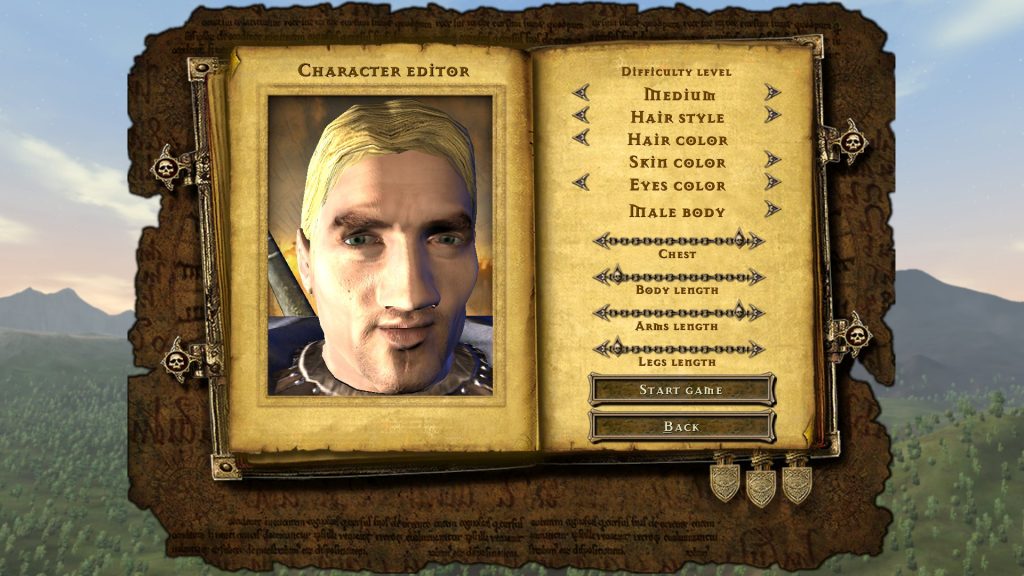
Plankton
It’s a desk toy masquerading as an interactive experience. The sum total of your interaction is clicking on a moving piece of plankton. But you don’t actually have to. It’ll play itself…albeit more slowly.
